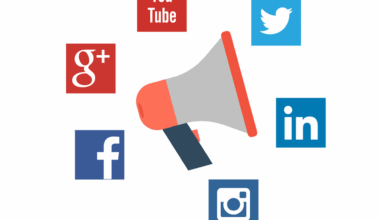Analyzing Cost per Acquisition Through Social Media Followers’ Behavior Patterns
Understanding Customer Acquisition Costs (CAC) is crucial for businesses, especially those leveraging social media as a marketing tool. CAC reflects the total expenditure a company incurs to obtain a new customer. This metric includes marketing expenses, advertising costs, and any associated outreach efforts. By analyzing social media followers’ behavior patterns, businesses can gain insights that help optimize their acquisition strategies. Engaging content on social platforms can lower CAC by attracting more potential customers. Additionally, tools like Google Analytics provide data to evaluate how different social media strategies affect overall customer acquisition costs. Engagement metrics such as likes, shares, and comments serve as indicators of potential conversion rates. By focusing on high-engagement posts, companies can refine their content and target audiences more effectively, ultimately leading to a reduced CAC. Social media platforms also offer advertising options that allow for targeting specific demographics, enhancing reach and return on investment. Evaluating the right metrics is essential for tracking the effectiveness of campaigns. In turn, understanding and analyzing these various factors can lead to improved marketing efficiency and cost management.
Social media is a powerful platform for tracking customer behavior. Monitoring how potential customers interact with your social media content can uncover valuable insights. Each social media platform offers unique tools for analyzing engagements, such as tracking clicks, impressions, and conversion rates. By testing various types of content, businesses can identify which resonates most with their audiences and yields the best engagement. These findings can lead to refining marketing approaches, enhancing overall conversion strategies, and ultimately lowering customer acquisition costs. Regularly reviewing follower demographics and behavior allows companies to tailor their marketing efforts effectively. This detail-driven approach helps ensure that marketing resources are allocated efficiently. Investing in social listening tools can also provide additional insights. Companies can stay ahead of trends, understand audience preferences, and react to customer feedback dynamically. Furthermore, fostering a community around the brand can lead to organic growth and improved CAC. Brands that are engaging and responsive to their followers often see higher loyalty rates, which ultimately translates to lower cost per acquisition. Therefore, adapting to followers’ behavior should be a priority for businesses aiming to enhance their social media strategy.
Determining Key Performance Indicators
When analyzing customer acquisition costs via social media, it’s vital to define Key Performance Indicators (KPIs) that will inform strategic decisions. Metrics such as cost per impression, click-through rates, and engagement levels should be employed. Each KPI provides insights into a specific aspect of the acquisition process. For instance, high click-through rates can indicate compelling content, while a high cost per impression might suggest inefficiencies in ad spending. Monitoring these KPIs can lead to informed decisions about budget allocation and strategic adjustments. Furthermore, tracking conversions directly links expenditures to acquired customers. It helps clarify whether social media efforts contribute positively to the bottom line. Social media analytics tools like Facebook Insights and Twitter Analytics offer in-depth analyses of audience behavior, engagement rates, and demographics. Combining data from these platforms with web analytics gives a comprehensive view of how social media impacts customer acquisition costs. Ultimately, defining and tracking KPIs enables companies to recognize which marketing strategies yield the best results. Hence, utilizing this data not only supports effective decision-making but also plays a critical role in enhancing profitability.
Another critical aspect to consider is the timing of social media campaigns. Analyzing follower activity during different times can reveal patterns indicating when posts receive the most engagement. Typically, businesses find that posting during peak hours results in higher interaction rates, drawing more potential customers to offerings. Furthermore, seasonal trends can affect customer acquisition costs as certain times of the year may present higher conversion likelihoods. Thus, optimizing post schedules according to follower habits can improve visibility and reduce CAC. Social media managers should invest time in researching the specific audience’s behaviors related to their brand. This could involve assessing engagement over different days or months of the year. Additionally, running A/B tests on posting times can yield informative data regarding optimum engagement. Experimenting with visuals, headlines, and calls to action can lead to better performance. Therefore, adapting social media strategies in response to the audience’s preferences undoubtedly helps improve client acquisition rates while also being cost-effective. Monitoring and adjusting marketing efforts based on these insights provides a roadmap for improved CAC.
Engaging Followers through Quality Content
Creating high-quality, engaging content is essential in attracting potential customers on social media. Unique, valuable, and consistent posts can greatly influence followers’ behavior. When businesses deliver meaningful content, they build trust and foster relationships with their audience. As a result, followers may become more inclined to convert into customers. Content types such as videos, infographics, and interactive polls are effective in boosting engagement levels. This, in turn, can reduce customer acquisition costs by converting followers into loyal advocates for the brand. Moreover, storytelling can play a significant role in enhancing emotional connections. Brands that share compelling narratives often see increased interactions and customer loyalty. These stories not only drive engagement but also make followers feel part of a community. User-generated content is another cornerstone of effective social media strategy. Encouraging satisfied customers to share their experiences can boost influence, as this content tends to resonate well with potential clients. Therefore, consistently providing excellent content lays the groundwork for a successful customer acquisition strategy. Tailoring content to meet followers’ interests enhances the likelihood of attracting new customers.
Analyzing the effectiveness of social media advertising is essential for understanding customer acquisition costs better. While organic posts generate engagement, paid promotions can significantly amplify reach and target specific audiences. A granular examination of ad performance through A/B testing helps businesses determine which ads yield the best CAC. Marketers should experiment with varying ad formats to discern what resonates best with their audience—whether it be image ads, carousel ads, or video campaigns. Tracking lead generation from these ads also provides insights into conversion rates. Tools like Facebook Ads Manager allow for real-time adjustments based on performance metrics. Advertisers can modify budgets, optimize targeting, and evaluate effectiveness on the fly. Thus, monitoring ad spend effectiveness is crucial for lowering CAC. Many successful businesses dedicate a significant portion of their marketing budget to these paid strategies, reaping sizeable returns. The right balance between organic reach and paid advertising can increase overall conversions while optimizing costs. By diligently analyzing ad performance data, companies can enhance their social media marketing strategies and improve profitability through more informed decision-making.
The Future of Social Media Metrics
As social media evolves, so must strategies surrounding customer acquisition costs. Understanding emerging trends in social media metrics becomes paramount for marketing success. Integration of artificial intelligence and machine learning algorithms into analytics tools offers deeper insights into follower behavior and spending patterns. Businesses ready to embrace these advancements will have a competitive edge in improving their CAC. Predictive analytics is another area gaining traction, as these technologies can forecast future trends based on current data patterns. Expect emerging innovations to influence how businesses tailor their social media strategies. Furthermore, the rise of social commerce adds another layer to acquisition costs, combining shopping experiences with social engagement. Brands that harness this trend effectively can lower CAC by streamlining the consumer journey. Building brand loyalty through authentic engagements will remain critical. Focusing on maintaining positive follower relationships can have significant long-term benefits. Hence, companies that prioritize adapting to these changes while optimizing their strategies will thrive in the evolving landscape. By leveraging innovative tools and insights, businesses can remain competitive and enhance customer acquisition efficiency.
Ultimately, monitoring and adjusting customer acquisition costs through social media metrics can lead to tremendous growth opportunities. Businesses need to adopt a holistic approach that considers various social media strategies, reviews engagement rates, and analyzes customer interactions. It’s essential to stay informed about emerging tools that can aid in tracking these metrics effectively. Naturally, experimentation plays a central role in refining social media strategies. Companies should remain agile and responsive, ready to pivot based on audience feedback and performance data. Additionally, nurturing customer relationships long after the acquisition is paramount. Retaining acquired customers will ensure that expenditures translate into long-term profitability. Continuous interaction can create brand advocates, who will further assist in lowering customer acquisition costs through organic referrals. Utilizing metrics enables businesses to optimize their marketing efforts and tailor experiences that resonate with customers. As companies focus on maintaining a balance between cost control and effective marketing, they will harness the full potential of social media. Cultivating a solid understanding of customer behavior patterns is essential for thriving in a competitive marketing environment. The ongoing focus on adaptation and continuous learning will lead to improved customer acquisition strategies.





